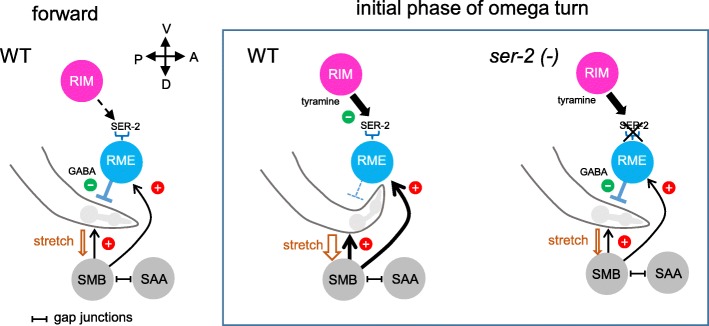Fig. 6.
A model for regulation of head movements via tyraminergic modulation of RME neurons. Left: Schematic representations showing neural circuits that restrict head bending amplitude during forward movements in wild-type (WT) C. elegans. When animals bend their heads, the movement activates putative stretch receptors in the SMB and SAA neurons on the opposite side of the bend. The SMB neurons activate the ipsilateral muscles and RME neurons, which relax the contralateral muscles of the head and restrict the bending. Middle: In the initial phase of omega turns, tyramine released from the RIM neurons overrides the RME-mediated downregulation system through SER-2 and alleviates the proprioceptive feedback, so that the animals show exaggerated head bending. Right: In ser-2 mutants, tyramine fails to induce the RME-mediated disinhibition of the head muscles, resulting in a shallow head bending in the omega turns

